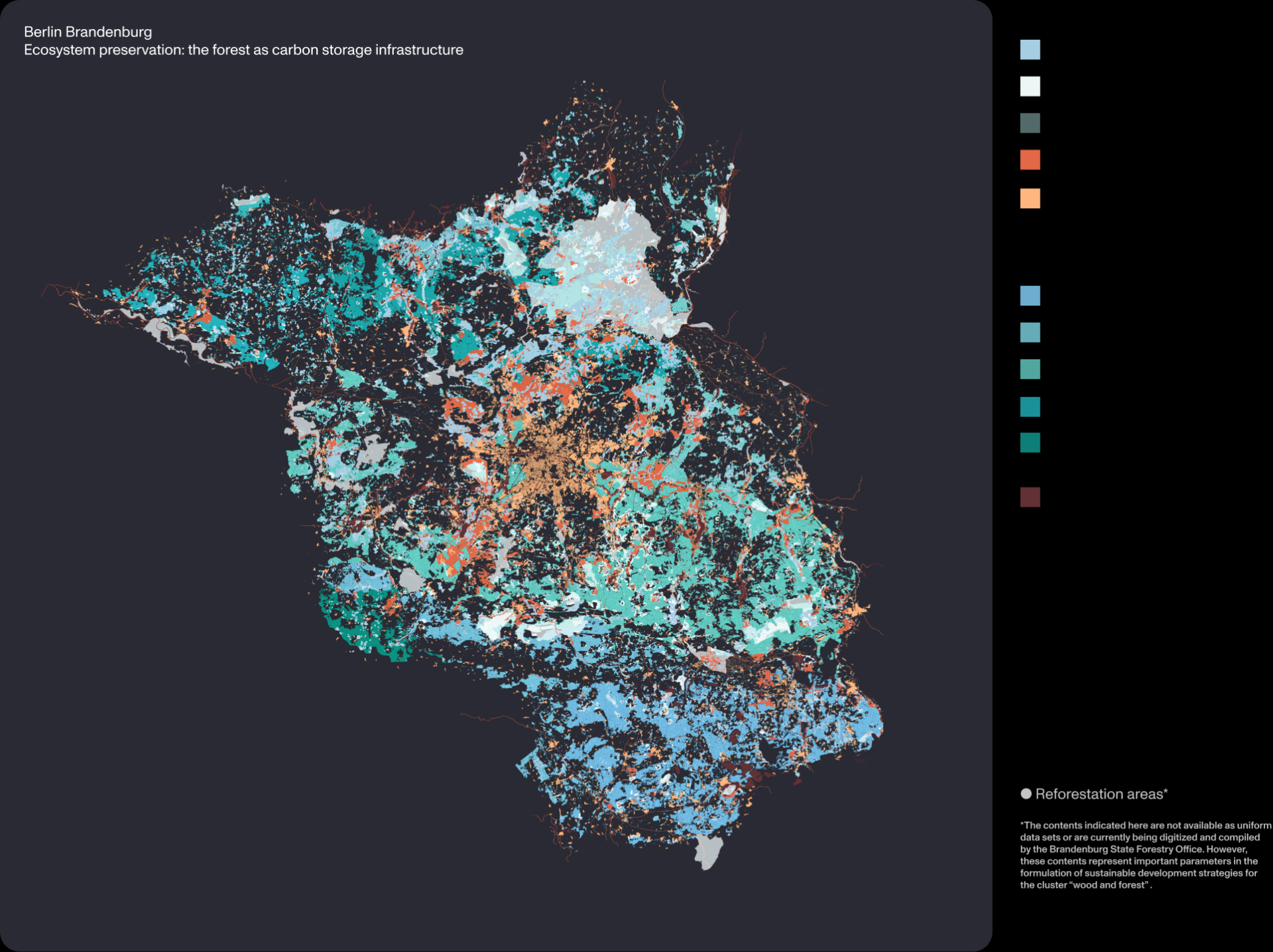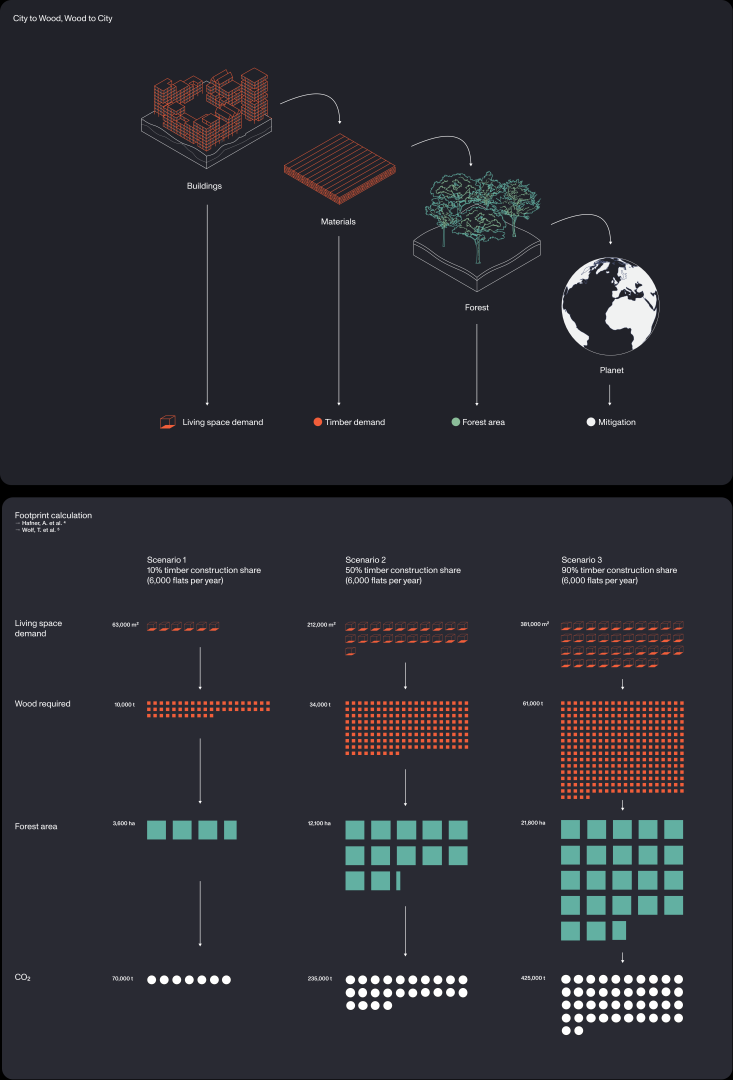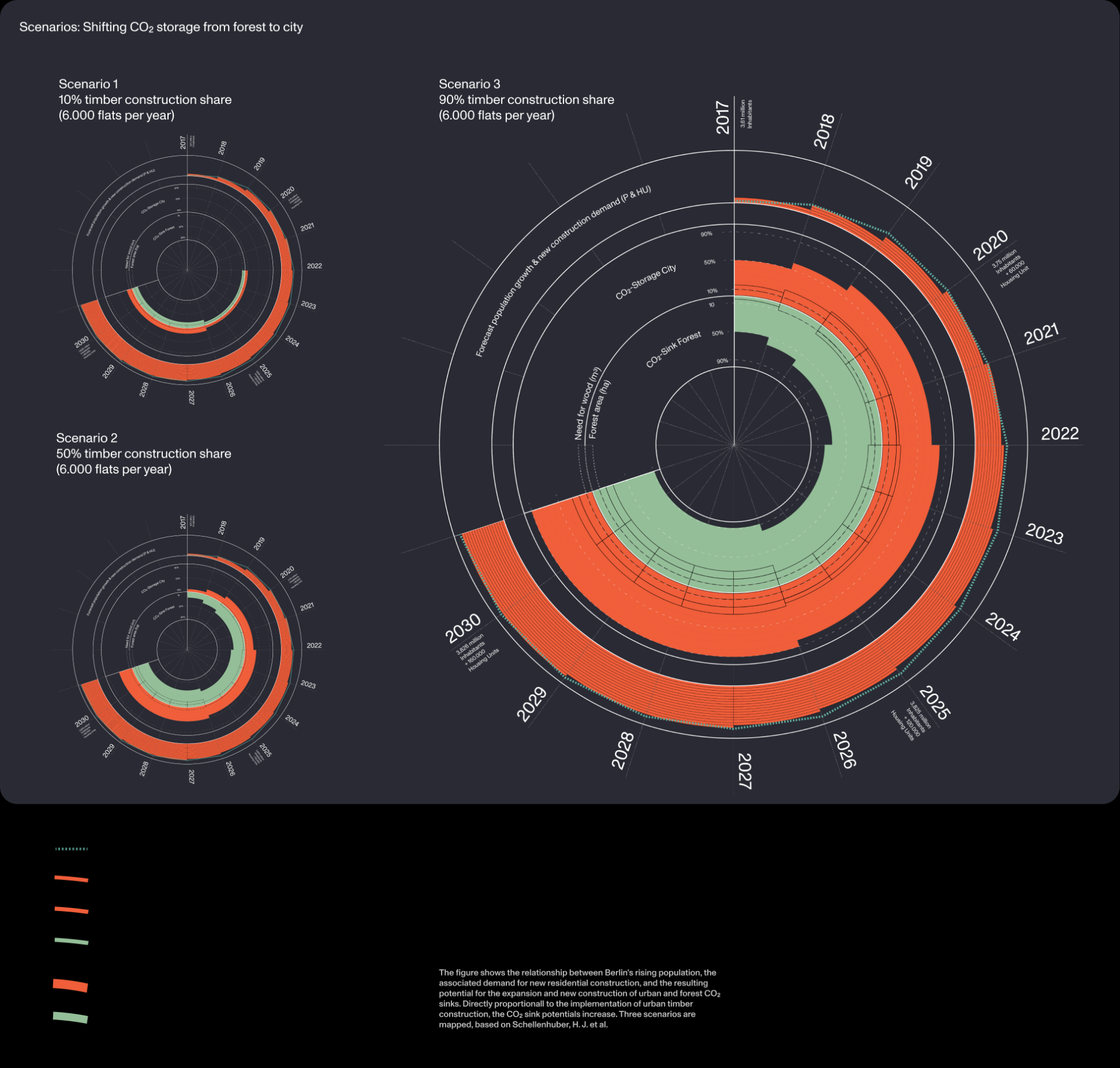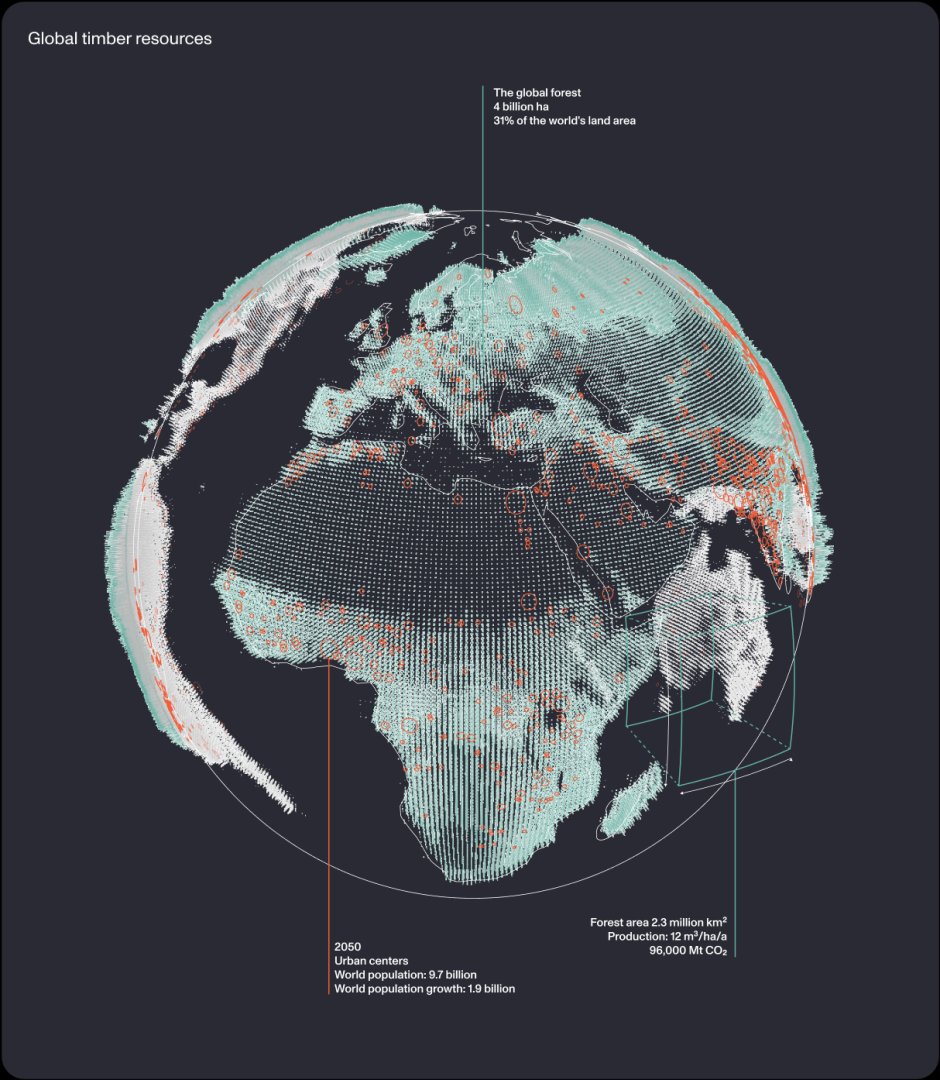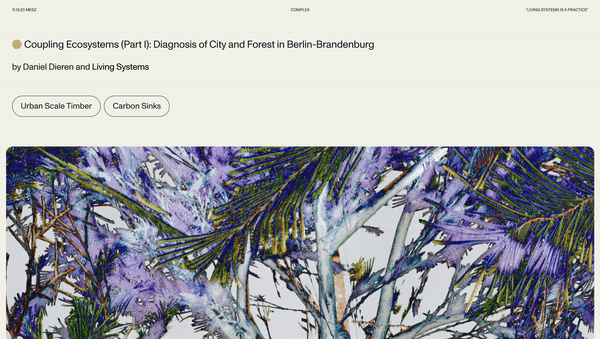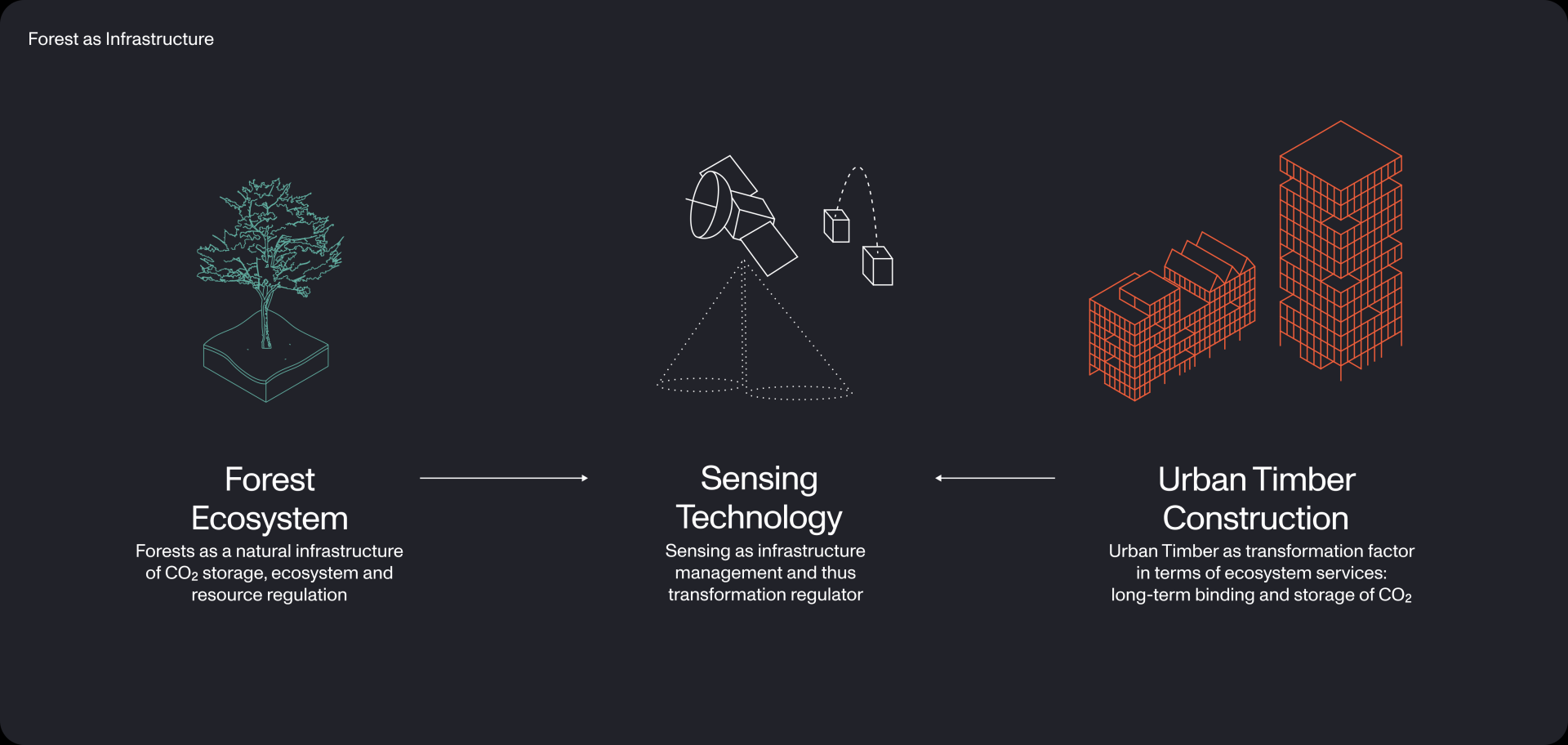Coupling Ecosystems
Basic information
Project Title
Full project title
Category
Project Description
The CO2 storage capacity of timber will be decisive in achieving climate neutral construction. Thus, forest conversion plays an important role in responding to the emerging demand and stressors indicated by climate change. Only a holistic modelling of demand and ecosystem capacities can ensure ecologically stable, yet productive forests. Here, the knowledge transfer project "Coupling Ecosystems" provides the basis for informed decision making and effective action.
Project Region
EU Programme or fund
Description of the project
Summary
The sustainable use of wood as a mitigation and substitute building material becomes part of a global climate strategy. In our cities, building with wood and wood-based materials creates a permanent, biogenic carbon reservoir, while avoiding carbon dioxide emissions caused by mineral-based materials. In a multi-storey timber apartment building, depending on the type and method of its construction, 100 to 200kg of renewable building materials are integrated per m² of floor area (Hafner et al.). However, the construction sector must draw a balance between the carbon storage effect of renewable raw materials and the material-effective use of wood on one hand and the CO2 storage capacity of natural ecosystems on the other.
To mediate this issue, Coupling Ecosystems will provide the necessary insight for designing policies and regulatory frameworks on various levels of urban timber construction by making accessible existing technologies and research to stakeholders and decision makers on a communal level and further. Alongside offering a digital platform for the building and forestry sector as well as experts from ecology and remote sensing, the goal is to collaboratively develop tools to scale urban timber construction sustainably by modelling the systemic conditions of supply and demand.
Key objectives for sustainability
In order to anchor urban timber construction sustainably in the city and its (re)development, it is necessary to pursue a systemic approach and to focus on our forests and natural ecosystems. The keyword will be forest conversion in order to maintain ecological stability while ensuring the necessary productivity of our forests to answer the rising demand in wood. Only if the expected need for timber materials is served with sustainably increased productivity, global carbon sequestration will grow – and thus a reduction in greenhouse gases through timber construction.
Therefore, the origin of the wood and the development of wood consumption patterns are important parameters when assessing the mitigation potential of timber building material. These are mainly influenced by the regulatory framework created by the federal, state, and local governments. In order to broaden the understanding of the impact decisions in policy making and city development will have on the natural ecosystems, Coupling Ecosystems wishes to collaboratively establish standards to measure and quantify actions of planners by developing simulation tools, that not only comprehensively map systemic changes in our forests due to climate change and the increasing economic demand, but also estimate them in advance.
Key objectives for aesthetics and quality
Through monitoring and remote sensing systems, technology offers the opportunity to understand ecosystems and manage them sustainably. Various technologies that are already available today, are being used in agriculture to monitor intensity and yield management. However, this potential is not yet exhausted. Satellite and drone images provide a comprehensive picture of our forest, as do sensors that monitor soil composition and acidity as well as nutrient enrichment besides others.
This data is little accessible, let alone comprehensible to many actors in the forestry and building industry. Nor are processes of procurement representing this data based deep insight in terms of sustainable product sourcing. Yet, the possibility to adequately reflect the matter of origin, life cycle and impact of materials within design will stand for a new aesthetic in architecture and building. Returning to the core meaning for material honesty will create a new perpetuum in design transformation. Providing the necessary insight to guide planners towards implementation is Coupling Ecosystem’s contribution to foster a new relationship towards materiality for both planners and users.
Key objectives for inclusion
Pilot projects such as the Schumacher Quartier in Berlin rely almost entirely on renewable raw materials and above all on local production, putting a lot of pressure on local forest stock. Yet, to compromise between the different demands placed on the forest and its ecosystem services and thus to initiate a suitable approach to forest conversion, it is essential to grant access to the collected insight beyond academia, research units and national governments. Especially small scale private and communal forest owners and businesses as well as district administration, who are often deprived of possibilities to foster nature preservation due to market and price pressure while battling intensifying climate stress, need to be integrated in decision making processes. Only close networking between stakeholders from the providing sector as well as scientists and administrators ensuring nature preservation with regard to capacity limits of ecosystems can scale urban timber construction sustainably. Basis of such collaboration is shared knowledge and a place for exchange.
In order to create barrier-free access and make insight from (academic) research publicly available, Coupling Ecosystems aspires to communicate investigative results, regulatory debates and discourses openly and clearly. Therefore, the focus is on a simple design of the online platform and the comprehensible presentation of essential facts providing information on funding and basic knowledge. A functional yet appealing format that encourages interaction and playful acquisition of knowledge will address a broader audience than any paper and/or report would possibly generate. Providing insight and learnings from workshops and conferences beyond their happening and beyond their first row participants is key for stakeholders to form allies.
Innovative character
Often we see quick technological fixes to occuring climate challenges that go hand in hand with impact outsourcing. Market dynamics therefore often turn good aspirations into negative phenomena with quite the opposite results as originally intended. With the approach of Coupling Ecosystems it is the aim to pre-empt these dynamics to ensure the increased productivity of forests will not turn our natural ecosystems into highly efficient plantations to satisfy the demand for the raw material wood. In this case the carbon emissions of the building sector would be efficiently decreased yet the overall balance of carbon emission will be exacerbated as the extended carbon sink function of resilient and diverse forest ecosystems is diminished. Accompanying architectural and urban development with a systemic transformation and institutionalised knowledge building that includes human and non-human actors on all levels and integrates hidden processes to create new and strong dispositives is greatly innovative and little to be found in Europe as it is necessary to secure a healthy coupling of urban, non-urban and natural systems.

